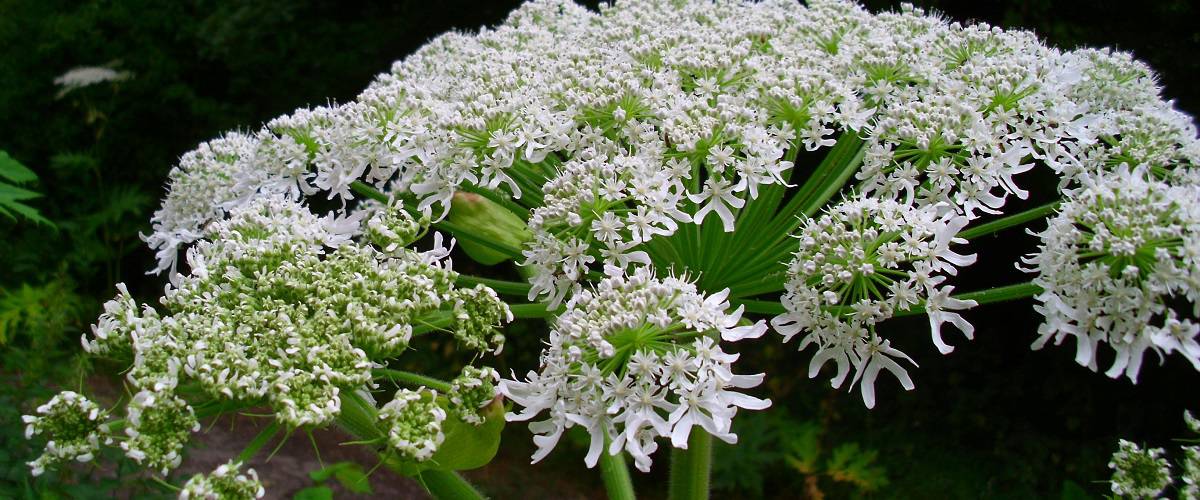Imagine a plant. Imagine this plant could grow to be the size of a house. Imagine this plant had a lovely white bundle of flowers on the top. Imagine this plant was invasive. Imagine that this plant could give you third-degree burns, that it could cause you to go blind. This sounds kind of terrifying if you ask me. Unfortunately, this is a very real problem happening in the American mid-west. It’s the Giant Hogweed.
Some call it giant cow parsnip or hogsbane. This is probably because it belongs to the Apiaceae family of plants, which includes dill, parsnip, and others. It’s also native to central Asia, so what is it doing here? The straight answer: humans are kind of dumb. It was imported to the U.K as an ornamental plant, where it eventually made it’s way to Canada and the United States. It spreads it’s seed in the wind, making it a very “spreading” plant.
Hogweed isn’t just another poisonous plant. Technically speaking, you could eat it and be okay. It has the same trick as poison ivy does, in that it coats itself in a thin, clear sap, and that’s where the bad stuff is. This sap contains furanocoumarins. Should the sap come in contact with skin, it will make you EXTREMELY sensitive to ultraviolet light. I’m talking so much so that you risk getting third-degree burns simply from being outside. Even after its washed off and you’ve healed, it’ll leave you more sensitive to sunburns than you use to be for the rest of your days.
It’s also reported to cause damage, should any of this sap get into your eyes. While there are reports of blindness, we currently lack the scientific evidence as to if it can cause permanent blindness. Either way, best not rub your eyes in such a situation, just to be safe.
You likely don’t need to live every day in fear of this Genghis Khan of plants pillaging your home and sleeping with your wife. Though if you live in certain states, it may be helpful to read up about the plant. Right now, the plant has been discovered in New York, Ohio, Maryland, Washington, Oregon, Pennsylvania, Michigan, Virginia, Vermont, New Hampshire, and Maine.
Identifying and avoid Hogweed isn’t too hard. It’s very large, growing as big as 14 feet tall. It has distinct flowers, thin white hairs on its stalks, and commonly grows near streams and other bodies of water. Some plants will have purple splotches as well.
If you are the unfortunate few to come in contact with a giant Hogweed, wash the affected area with soap and cold water. Try to avoid as much sunlight as possible, then hide away indoors for a solid 48 hours. If the burns become rather bad, or you get it in your eyes, you should seek medical help immediately.
Stay safe, preppers.

